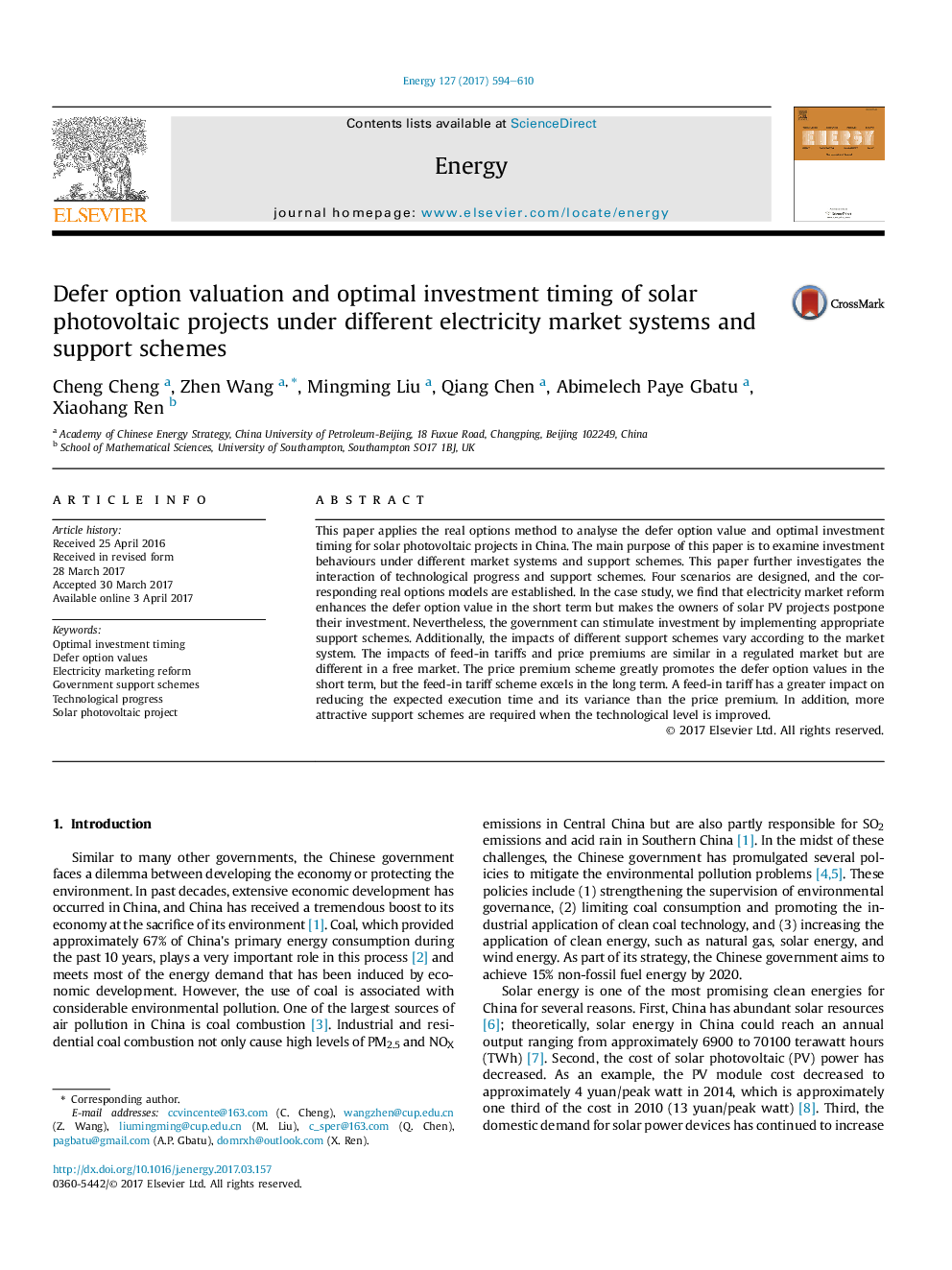| Article ID | Journal | Published Year | Pages | File Type |
|---|---|---|---|---|
| 5476835 | Energy | 2017 | 17 Pages |
Abstract
This paper applies the real options method to analyse the defer option value and optimal investment timing for solar photovoltaic projects in China. The main purpose of this paper is to examine investment behaviours under different market systems and support schemes. This paper further investigates the interaction of technological progress and support schemes. Four scenarios are designed, and the corresponding real options models are established. In the case study, we find that electricity market reform enhances the defer option value in the short term but makes the owners of solar PV projects postpone their investment. Nevertheless, the government can stimulate investment by implementing appropriate support schemes. Additionally, the impacts of different support schemes vary according to the market system. The impacts of feed-in tariffs and price premiums are similar in a regulated market but are different in a free market. The price premium scheme greatly promotes the defer option values in the short term, but the feed-in tariff scheme excels in the long term. A feed-in tariff has a greater impact on reducing the expected execution time and its variance than the price premium. In addition, more attractive support schemes are required when the technological level is improved.
Related Topics
Physical Sciences and Engineering
Energy
Energy (General)
Authors
Cheng Cheng, Zhen Wang, Mingming Liu, Qiang Chen, Abimelech Paye Gbatu, Xiaohang Ren,
